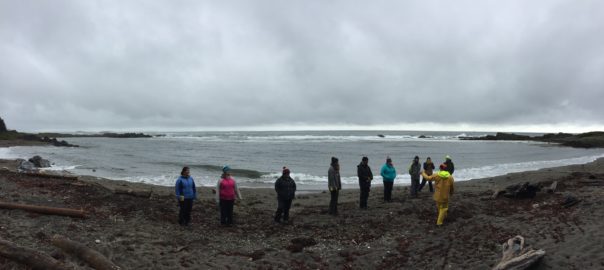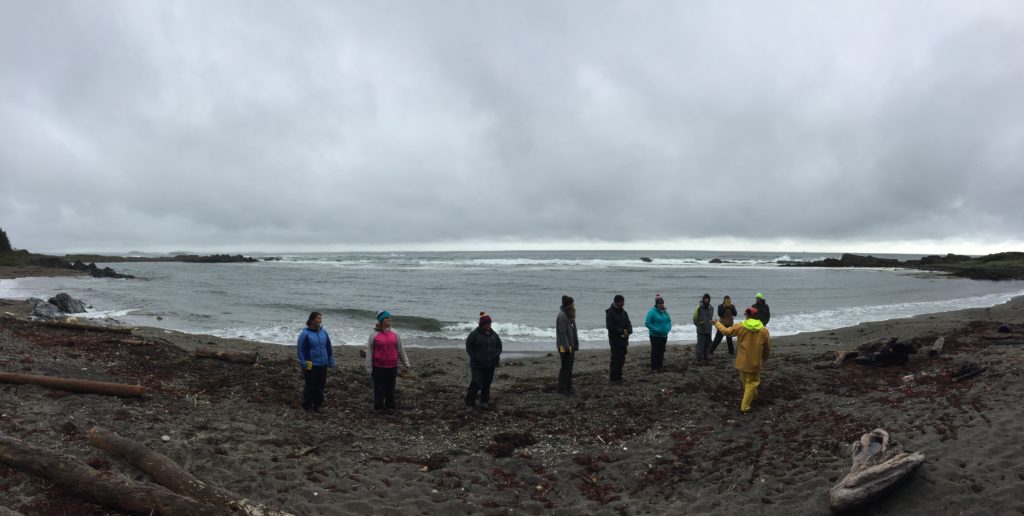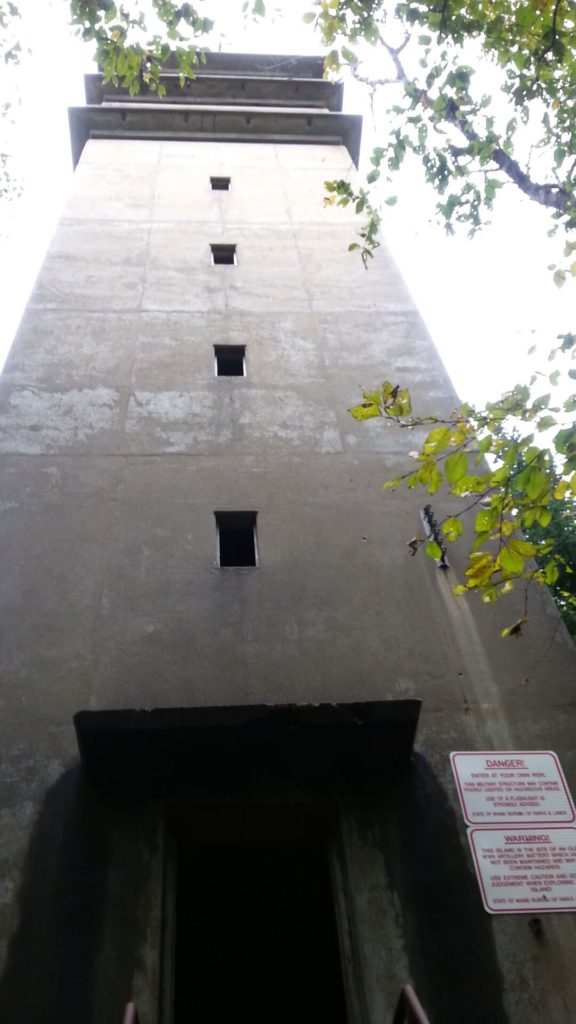It was a gloomy, rainy morning as we boarded the Bagheera on Peaks Island and set sail to Jewell Island in Casco Bay. We stopped at various places near islands to collect data from a CTD sonde, which measures temperature, salinity, pH, dissolved oxygen, turbidity and chlorophyll at various depths. We also took a core sample of the top 20 cm of the seafloor sediment by dropping a coring device attached to a cable off of the foreboom. Then we reeled it in and analyzed the muddy sediment. Once on Jewell Island we lowered our dry bags and food into Dr. Erikson’s little boat that we are towing for the entire voyage. Getting all of our gear to shore took several trips. We set up tents before it got dark and started getting dinner ready. The rain let up for a little bit until dinner time, when it picked up again, but fortunately we had a big group tent that could keep all of us out of the rain.
The following day we had lecture at the island’s Punchbowl. Here we learned about wave structures and how the two sides of the Punchbowl were affected differently by the same incoming wave sets. One side of the Punchbowl had rough waves and the other side was calm with hardly any waves flowing in, due to the friction generated by the shallowness of the bottom. We saw a dead seal that was missing its tail fins and you could see the jaw of the seal. It was so interesting, yet saddening at the sight of the poor mammal. We moved to the calmer side of the Punchbowl, where we learned that area was a big nursery during the summer months for organisms because predators could not get to them due to the water being so warm and shallow.
After lunch we went on a hike through the island. We saw two towers used for triangulation during World War II. One tower was about 5-6 stories high. From the top we saw above the trees the entire island, Portland, Halfway Rock and many miles out to sea. We reached a part of the island that had the WWII tunnels where ammunition and communication equipment were stored. We walked through the tunnels with many side rooms, large and small. On the far side of the tunnels, we reached what was left of large gun turrets. The structures were so fascinating and a part of history I didn’t know even existed from World War II.
-Danielle Martin’19




